
The pitcher’s assessment at RPP has many components, including the following:
-
- Movement Screen
- Strength and Power Assessment
- Pitching Mechanics Evaluation
- Video Review and Analysis
- Motion Capture Assessment
- Pitch Movement Evaluation (optional)
- Post-Assessment Consult Session
Movement Screen
The first step in the process is a basic movement screen. It’s ground zero for any training program. In some form or other, many of the issues pitchers face on the mound can be traced back to what we see in a movement screen. Many times, it can even predict what we’re more than likely to observe on video or motion capture later in the assessment process. Without a movement screen, you’re basically flying blind. A coach can provide a cues to a pitcher all day long, but if the body can’t physically perform the task, there isn’t a whole lot a coach can do.
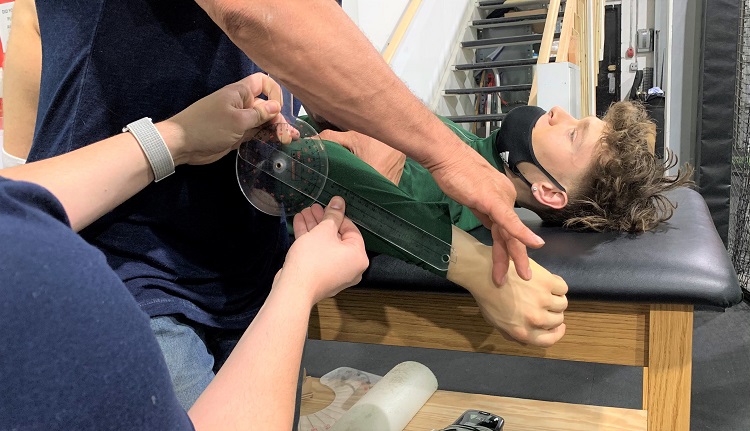
A movement screen is an integral part of how we evaluate a pitcher’s movement strategies, and it can tell us a lot about an athlete’s mobility and stability, range of motion and even fascial issues. A thorough assessment will evaluate a pitcher’s overall movement by reviewing the following categories:
-
- Laxity Test
- Standing Static Tests
- Shoulder
- Static Test
- Dynamic Movement
- Strength and Stability
- Flexibility and Tightness
- Lower Half
- Flexibility and Tightness
- Strength and Stability
- Other Tests
- Lunge Test
- Kneeling Test
Here is what our typical internal assessment report may lay out in terms of potential issues. There is tremendous value in this information, not only for evaluating potential flaws in the delivery but also weaknesses that need to be addressed in any strength training program.
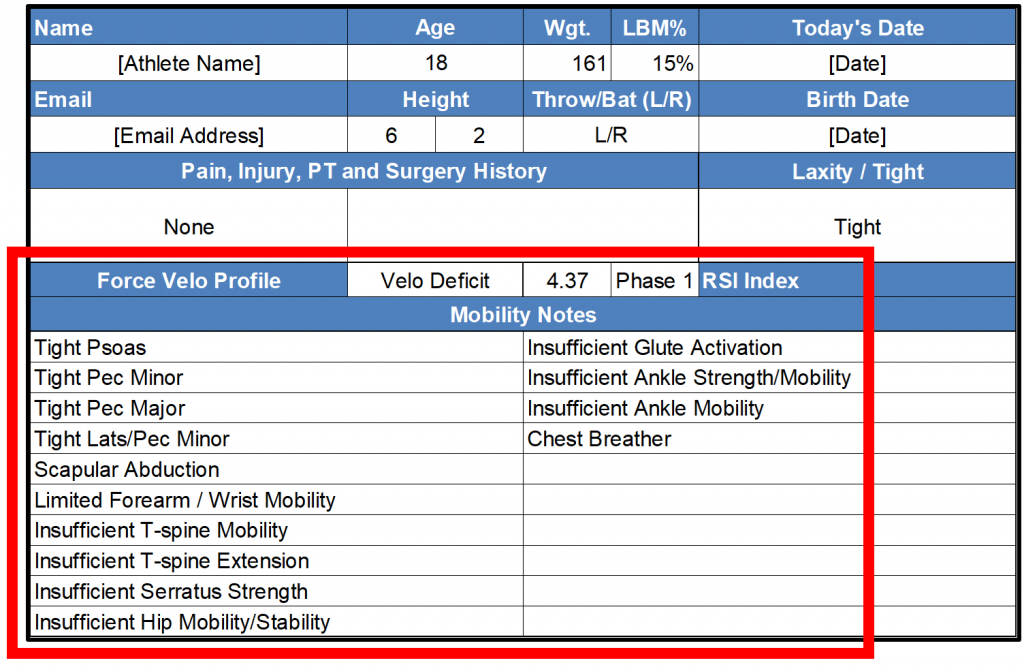
Strength and Power Testing
Strength and power testing can give us great insight into the type of strength and power training our athletes are initially producing and help create a blueprint for their strength training programs. It wasn’t long ago when strength testing was primarily measuring the 1 rep max (RM) of an athlete with a variety of different lifts in the weight room. Today, technology is changing this dramatically, literally as we speak. Several new technologies have found their way into the weight room. Let’s review a couple of them.
-
- Velocity Based Training (VBT) – VBT is a method of evaluating the intensity of a given movement through the monitoring of bar and/or body speeds. Until recently, measuring velocity during resistance training was only available to elite athletes, measured with expensive equipment such as a Tendo unit. But now, with the introduction of linear transducers, anyone can calculate percentages of 1RM with high precision at a fraction of the cost. Using technology, we can now zero in on an athlete’s true strength and power..
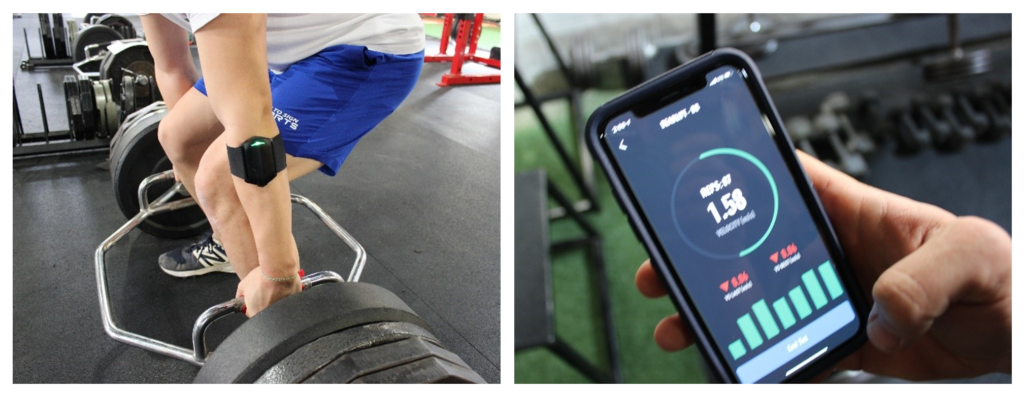
-
- The Force-Velocity Curve – Developing strength, speed and explosiveness in athletes is purely physics. Applying these traits to basic anatomical attributes can get a bit complicated but at the end of the day it’s all about force, velocity, and power. When it comes to training athletes in an explosive sport such as baseball, understanding how the athlete creates power through either force or velocity has a great deal to do with how they should train in the weight room. So, finding which trait, force or velocity, the athlete has a larger deficiency is the concept behind creating force-velocity profiles.
By using a jump-mat that can measure power production as well as the peak velocities the athletes are moving, we can better understand which side of power (force or velocity) the athlete relies on more and adjust training to give them more of what they need. In this way, we can actually shift an athlete’s force-velocity curve one way or another to help them create the perfect combination to become more explosive.
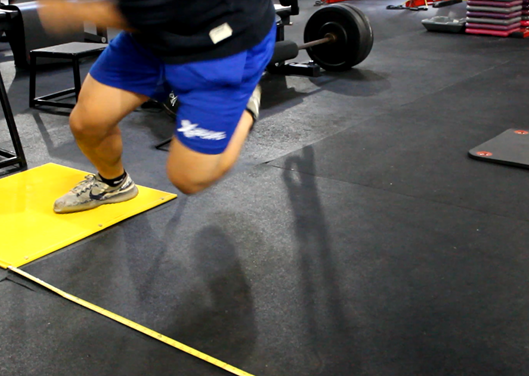
Pitching Mechanics Evaluation
Since no two pitchers are alike, it is our belief that assessing pitching mechanics is part art and part science. Frankly, the availability of technology forces the science part. We basically perform this part of the assessment in two ways, good old video analysis and with a multi-camera motion capture system.
Video Analysis – In our opinion, assessing a pitcher’s mechanics should start and end with video. All the data in the world can never replace watching a delivery with your own eyes. You can call us old school if you want, but a pitching delivery is a human endeavor, and in our opinion, video is still king.
Being able to visually see a pitcher in “real-time” speaks volumes about the athlete’s strengths, weaknesses, and overall athleticism. There are times when video will trump everything else the data is telling us. Why? Here’s one way to look at this. Pitching is an art, so…
-
- If it looks athletic,
- And velo and command are there,
- And there is no pain involved,
- Then LEAVE IT ALONE!
Motion Capture – Motion capture (“Mocap”) is considered to be the gold standard of measuring athletic movement. It is used across many industries and research organizations. It basically refers to recording human movement digitally and using that information to create an avatar at extremely high levels of accuracy.
During motion capture, movements are recorded synchronously with multiple cameras at the same time and 100s of times per second. This information is then mapped to a 3D model such that the avatar performs the same actions as the athlete in the digital world.
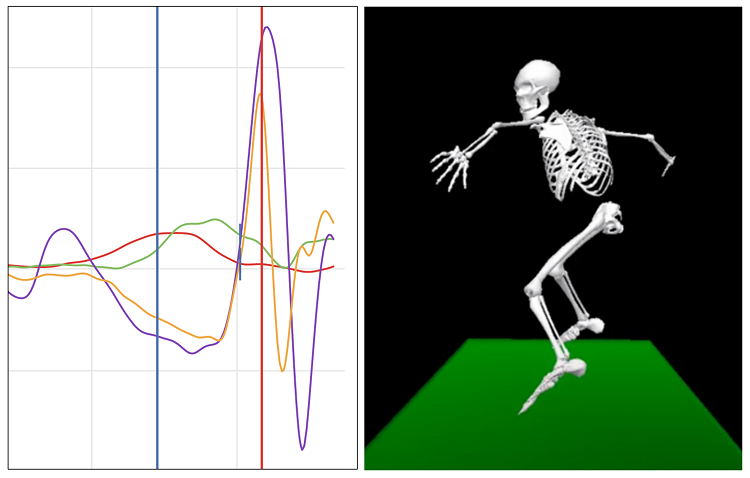
The data and information provided by our Qualisys motion capture system can be extremely valuable from several different perspectives, including:
First, it paints a thorough picture of how body parts are moving at extremely high speeds. It’s sort of similar to running a complete engine check while the care is travelling at 100 mph. A lot may seem normal at idle, but things can begin to break down at higher velocities. Basically, you can see and measure things you couldn’t otherwise.
Second, the data allows us to have a much better understanding of the torque and consequent stress placed on different parts of the body during the delivery. While higher stress levels naturally come along with higher velocities, much of this may also be due to strength and/or mobility limitations or less than optimal positions in the delivery (once again, we’re back to the body).
Third, we can use the system to help provide a detailed picture of where in the delivery the athlete may be losing velocity. While velo is obviously what most everyone is interested in, putting the complete picture together is crucial to make better decisions in the weight room and on the mound or at the plate.
A motion capture system can also provide a full kinematic sequence which graphically lays out how velocity is generated from the ground up, from your pelvis to your torso and then shoulders and finally the hand. There are many things that can go wrong as the kinetic chain works itself up the body. Mocap provides the angular velocities up the chain and allows us to numerically and graphically observe how velocity is transferred. Needless to say, all this information is incredibly additive and valuable.
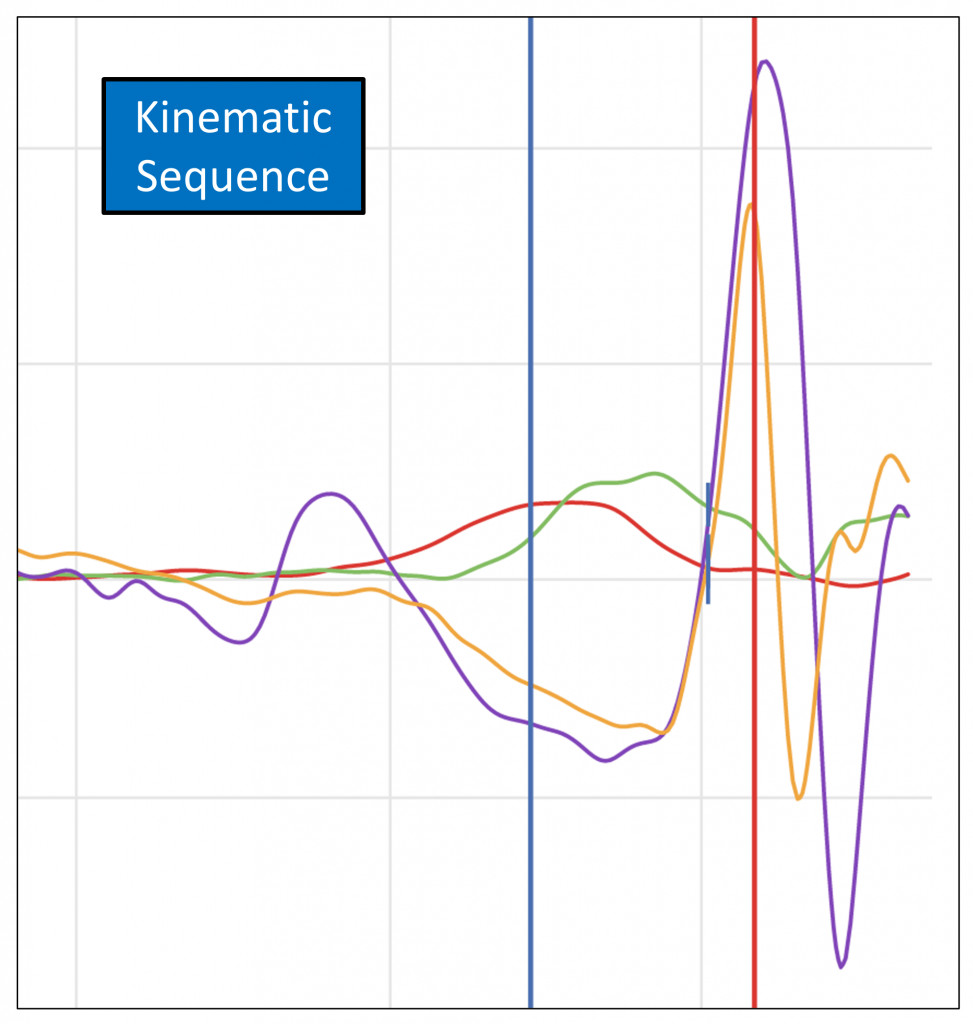
Pitch Movement Evaluation (optional)
Working with a Rapsodo Pitching camera system we can evaluate your ball movement after completing a full bullpen session. If you can’t throw a full bullpen during your visit, it would be difficult to get a good read. This portion of the assessment is optional.
Below is a list of five topics we evaluate in every pitcher’s ball movement:
-
- Spin axis by pitch type
- Spin efficiency %s by pitch type
- Differentiation and relative pitch movement
- Holes in the overall movement pattern
- Consistency of arm slot (release height and side)
The measurements will help dictate how we would work with each pitcher in a pitch design program. Issues may be varied but here are a few that regularly jump out from the analysis:
-
- 4-seam and 2-seam have similar movement patterns
- 2-seam could use more sink
- Change-up could use more drop and sink
- Curveball lacks sufficient depth
- The curveball is actually a slider
- The slider is more like a pure gyroball
The availability of data makes any discussion mute about ball movement, because the numbers tell you exactly what you’re throwing. When it comes to movement, eyes alone do not tell give you the whole picture.
Post-Assessment Consult Session
At the conclusion of your assessment, we will have a meeting (in-person or video conference) to review the results of your assessment. This includes reviewing your:
-
- Physical strengths and imbalances, including any mobility issues that may be hindering your ability to perform
- Pitching mechanics disconnects discovered during the video review and motion capture data analysis
- Pitch repertoire and ball movement parameters and opportunities discovered during your Rapsodo bullpen (optional)
At the conclusion of the consult session, we generally discuss a roadmap to address physical and mechanical issues that we’ve uncovered during the evaluation.
